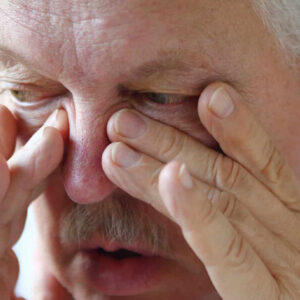
Otosclerosis Surgery: Hearing is an indispensable part of human life. We rely on our sense of hearing to communicate in daily life, perceive our surroundings, and strengthen our social bonds. However, in some cases, structural changes in the inner ear can lead to hearing loss. Otosclerosis is one of the most significant causes of hearing loss and is particularly notable for its prevalence in young adults. This condition leads to progressive hearing loss, and otosclerosis surgery—namely stapedectomy or stapedotomy—is one of the most effective treatment options. ENT Specialist Prof. Dr. Ozan Seymen, who practices at his own clinic in Istanbul, helps patients regain their hearing capacity through his expertise and experience in otosclerosis surgery. In this article, we will comprehensively cover what otosclerosis is, what causes it, how the surgery process is planned and performed, and what to expect after the operation.
What is Otosclerosis?
Otosclerosis is a progressive condition characterized by abnormal bone growth in a small bone in the middle ear called the stapes. Normally, the stapes bone should vibrate freely, but due to this abnormal growth, it loses its ability to move. As a result, the transmission of sound waves to the inner ear is disrupted, leading to conductive hearing loss. In advanced stages, the disease may spread to the inner ear and cause sensorineural hearing loss.
Although the exact cause of otosclerosis is unknown, factors such as genetic predisposition, hormonal changes, and viral infections are believed to contribute to the development of the condition. The fact that it is more common in women and worsens during pregnancy supports the significance of hormonal effects.
The typical onset age for the disease is between 20 and 40 years. Initially, it appears as mild hearing loss and progressively worsens, negatively affecting social life, job performance, and psychological well-being. Therefore, early diagnosis and appropriate treatment of otosclerosis are crucial.
What Are the Symptoms of Otosclerosis?
The most prominent symptom of otosclerosis is gradually progressing hearing loss. This loss is usually bilateral but may be more pronounced in one ear in some patients.
Other symptoms of the disease include hearing one’s own voice as more echoing, difficulty in perceiving low-frequency sounds, and tinnitus (ringing in the ears). In rare cases, balance problems may also occur as the disease progresses.
Unlike sudden hearing loss, the slow and progressive nature of the condition, independent of environmental factors, distinguishes otosclerosis from other causes of hearing loss. Individuals experiencing these symptoms should consult an ENT specialist as soon as possible.
How is Otosclerosis Diagnosed?
The diagnosis of otosclerosis is made through a detailed ear examination and advanced hearing tests. Audiometry is used to determine the degree and type of hearing loss. Typically, conductive hearing loss is detected in this test.
Tests such as tympanometry, which assess middle ear function, also assist in diagnosis. In some cases, a CT scan of the temporal bones can directly visualize the abnormal growth on the stapes bone. However, diagnosis is generally made through clinical examination and audiological evaluation.
Prof. Dr. Ozan Seymen adopts a multidisciplinary approach by conducting comprehensive audiological and radiological assessments in patients suspected of having otosclerosis to make the most accurate diagnosis and develop the most appropriate treatment plan.
Treatment Options for Otosclerosis
The primary goal in the treatment of otosclerosis is to halt the progression of hearing loss and improve hearing capacity. Treatment options include hearing aids and surgical intervention.
In the early stages, when hearing loss is mild, the use of hearing aids may be recommended. These devices amplify sound to compensate for hearing loss but do not stop disease progression.
In more advanced cases, otosclerosis surgery—stapedectomy or stapedotomy—provides a permanent and effective solution. During this procedure, the immobile stapes bone is either removed or restored and replaced with a prosthesis. This restores sound wave transmission to the inner ear and significantly improves hearing.
Prof. Dr. Ozan Seymen determines the most suitable treatment based on each patient’s degree of hearing loss, age, and overall health condition, and guides them through the process with detailed information.
What is Otosclerosis Surgery (Stapedectomy)?
Otosclerosis surgery involves removing the stapes bone and replacing it with a small prosthesis. This allows sound vibrations to be transmitted to the inner ear again. The procedure is performed under general or local anesthesia and takes about 1–2 hours.
During the operation, the surgeon accesses the middle ear through the ear canal, lifts the eardrum, and exposes the structures of the middle ear. The abnormally fixed stapes bone is carefully removed, or a small hole is drilled into it, and a prosthesis is placed. This prosthesis transmits vibrations to the cochlea, restoring hearing function.
Most patients experience significant improvement in hearing following stapedectomy surgery. The success of the procedure depends on proper patient selection, surgical experience, and post-operative care. Prof. Dr. Ozan Seymen manages this process using the latest surgical techniques and a meticulous approach to maximize his patients’ hearing health.
Recovery After Otosclerosis Surgery
After otosclerosis surgery, patients are usually monitored for a day in the hospital and then discharged. There are several important points to consider during the recovery period.
In the first few days post-surgery, patients may experience dizziness, imbalance, and mild ear pain. These symptoms typically resolve on their own within a few days. The operated ear should be protected against infection, and strenuous physical activities should be avoided.
For the first few weeks, patients are advised to refrain from flying, lifting heavy objects, jumping from heights, and applying excessive pressure while blowing the nose. Follow-up visits are conducted regularly, and hearing is monitored through audiometric tests.
Prof. Dr. Ozan Seymen provides detailed aftercare instructions to reduce the risk of complications and support optimal hearing recovery.
Risks and Complications of Otosclerosis Surgery
As with any surgical procedure, otosclerosis surgery carries certain risks and potential complications. However, these can be minimized with proper patient selection, an experienced surgeon, and careful surgical technique.
The most common risk is that hearing may not improve as expected or may rarely worsen. Due to the sensitivity of inner ear structures, sensorineural hearing loss may sometimes develop. However, this risk is significantly reduced when performed by a skilled and experienced surgeon.
Dizziness and balance issues are common in the early post-operative period but are usually temporary. Permanent balance problems are rare. Other rare side effects include ear infections, prosthesis displacement, or tympanogenic complications.
While facial nerve damage is a theoretical risk during surgery, modern surgical techniques have greatly reduced this possibility. Prof. Dr. Ozan Seymen ensures that patients are well-informed about all potential risks before surgery to support an informed treatment process.
Revision Otosclerosis Surgery
If the desired hearing improvement is not achieved after the first surgery, or if hearing declines over time or prosthesis-related issues arise, revision surgery may be necessary. Revision otosclerosis surgery is more complex and technically challenging than the initial procedure.
The goal of this second surgery is to identify the issue, reposition the prosthesis, use a new prosthesis, or repair other middle ear structures. However, each patient must be thoroughly evaluated to determine suitability for revision.
Prof. Dr. Ozan Seymen carefully analyzes the patient’s medical history and current ear condition to tailor a personalized surgical strategy. The expertise and experience of the ENT surgeon are critical for high success rates in revision surgeries.
Does Otosclerosis Surgery Provide a Permanent Solution?
Yes, successful otosclerosis surgery significantly improves hearing loss, and this improvement can be permanent for many years. However, in rare cases, prosthesis displacement or other factors may require revision in the future.
When Will Hearing Improve After Surgery?
Initial signs of improvement are usually noticed within a few weeks. However, it may take several months for hearing to fully stabilize and reach its optimal level.
How Soon Can One Return to Daily Life After Surgery?
Most patients can return to daily life about a week after surgery. However, strenuous physical activities should be avoided for at least a month.
Will Tinnitus Go Away After Surgery?
Tinnitus often decreases or completely resolves after otosclerosis surgery. However, it may persist in some patients.
Is Otosclerosis Surgery a Painful Process?
Post-operative pain is generally mild and can be easily managed with painkillers. Severe pain is not expected.
Impact of Otosclerosis on Quality of Life
Hearing loss is not just about not hearing sounds—it can also lead to social isolation, depression, communication difficulties, and decreased professional performance. Progressive hearing loss in otosclerosis can cause individuals to withdraw from social environments, lose self-confidence, and derive less joy from life.
Therefore, otosclerosis surgery not only restores hearing but also positively affects patients’ psychological and social well-being. After a successful surgery, patients often feel more confident, social, and productive.
Prof. Dr. Ozan Seymen aims for this marked improvement in quality of life following otosclerosis surgery and acts with the awareness that hearing is not just a sense, but a way of life.
The Importance of Early Intervention in Treating Otosclerosis
Otosclerosis is a progressive disease that can lead to more severe hearing loss over time. Early diagnosis and intervention are therefore essential. Intervening in the early stages reduces tissue damage and increases the success rate of surgery.
If the disease spreads to the inner ear in advanced stages, the hearing loss becomes sensorineural, making surgical restoration of hearing more difficult. Therefore, individuals experiencing hearing loss should not ignore their symptoms and should consult an ENT specialist as soon as possible.
Life Before and After Otosclerosis Surgery
A thorough preoperative assessment directly affects the success of otosclerosis surgery. During this period, the patient’s overall health, current hearing capacity, and expectations must be reviewed and managed appropriately.
After surgery, it is crucial to strictly follow the physician’s instructions. For a successful recovery, follow-up appointments should not be missed, the ear should be protected, and a careful lifestyle should be maintained. This helps maintain the hearing benefits provided by the surgery for many years.
Prof. Dr. Ozan Seymen guides his patients from the preoperative stage through the post-operative period to achieve the best possible outcomes.









 Türkçe
Türkçe Français
Français Deutsch
Deutsch